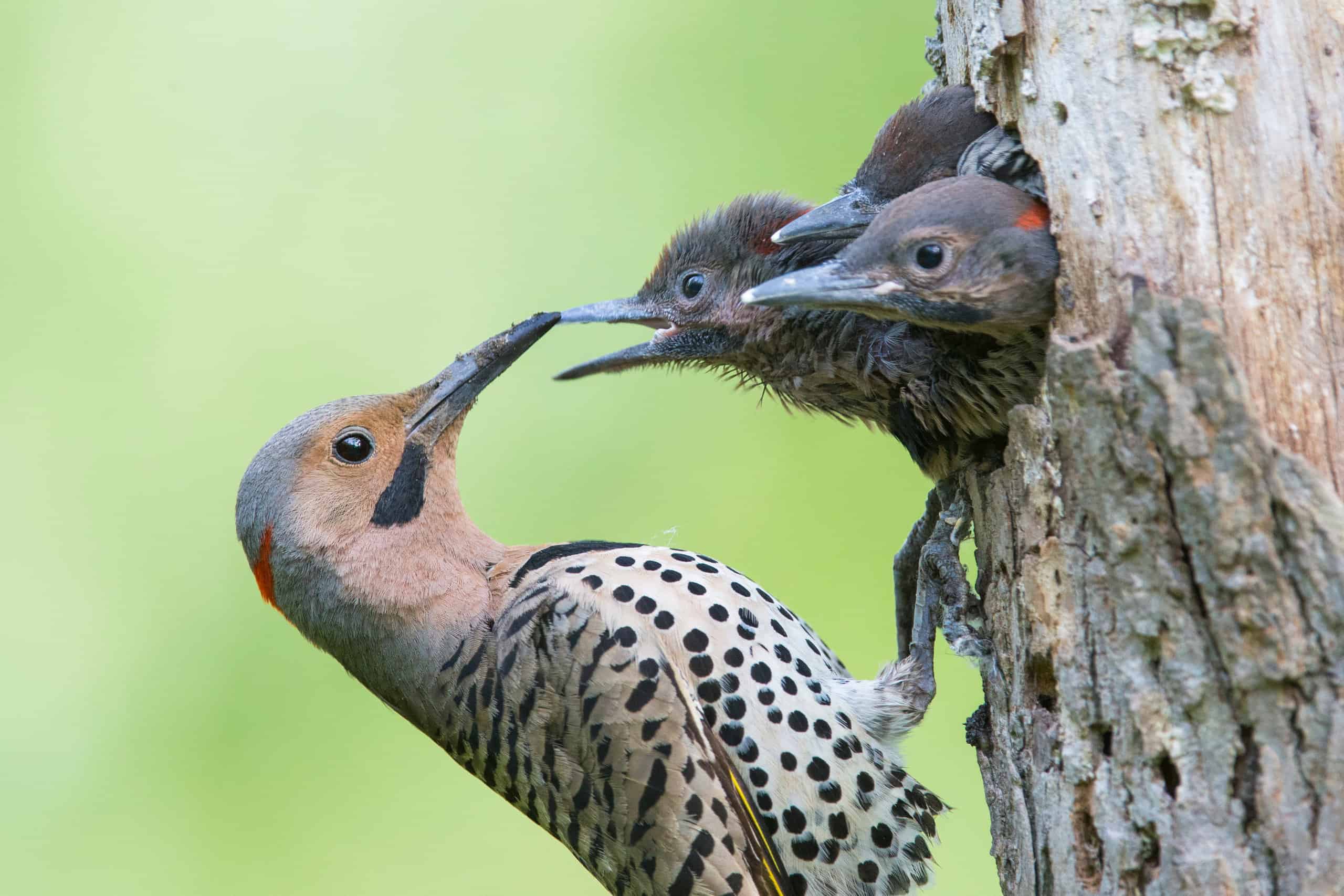Woodpeckers are an interesting and diverse group of birds. They belong to the family Picidae, which includes around 240 different species from around the world. You have probably seen at least a few different woodpeckers in your lifetime if you have spent time in nature or even in your own backyard. But have you ever seen a baby woodpecker? Baby woodpecker chicks grow quickly, but stay mostly hidden inside their nests until they get ready to fledge. Discover more about these elusive young birds, including what they eat, where they live, and more!
Baby Woodpeckers Hatch Naked and Helpless
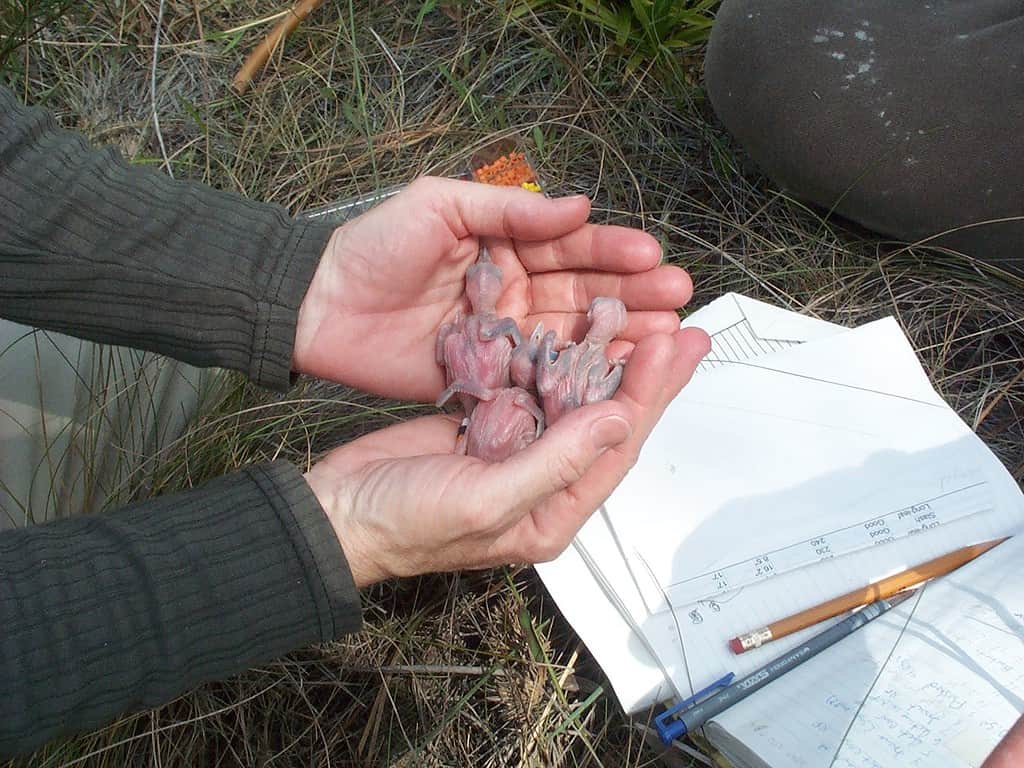
Altricial birds such as these Red-cockaded Woodpeckers emerge naked, blind, and helpless.
©Bureau of Land Management / Public Domain – Original / License
Woodpeckers are altricial species, which means a baby woodpecker is naked and helpless when it hatches. With closed eyes and few to no feathers, these tiny birds must depend on their parents for everything from food to warmth. They spend all of their time at first tucked safely away in their nests. They stay out of sight of people and potential predators, waiting for food. They grow and develop quickly, though. Before long, baby woodpeckers begin poking their heads out the opening of their nest, anxiously beckoning for their next meal.
Most Baby Woodpeckers Are Raised in Dead Trees
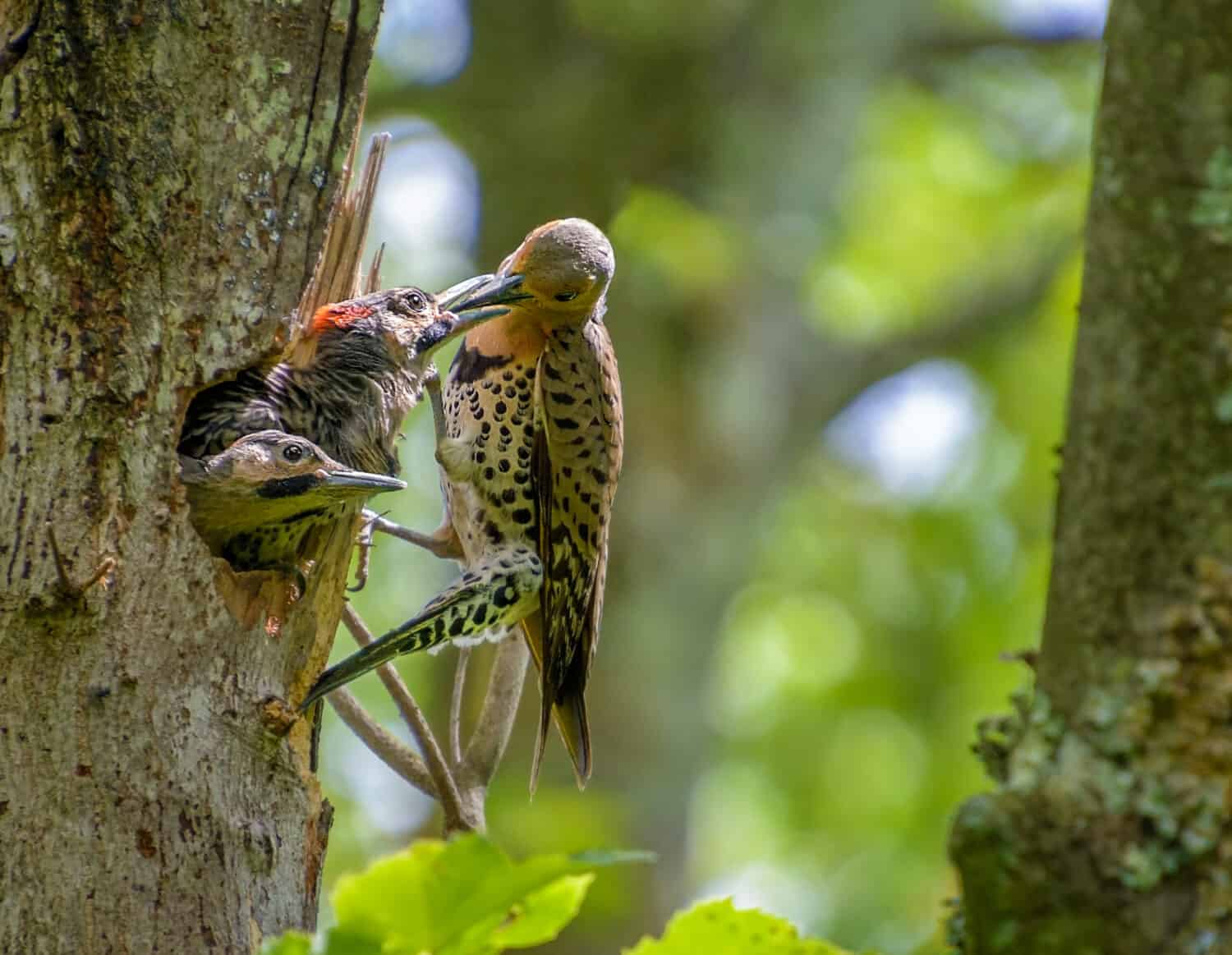
Woodpeckers usually make nests in dead trees or large, dead tree limbs.
©K Quinn Ferris/Shutterstock.com
For the most part, woodpeckers raise their babies in cavities in dead trees or large, dead limbs. They may choose sickly trees that look healthy on the outside, but on the inside the heartwood has begun to rot. Some woodpeckers nest in nest boxes. If no suitable nest sites in trees or nest boxes can be found, woodpeckers will sometimes drill into utility poles, large wooden fence posts, or even into wooden siding on houses or other structures.
Some Woodpeckers Nest in Cactus Plants
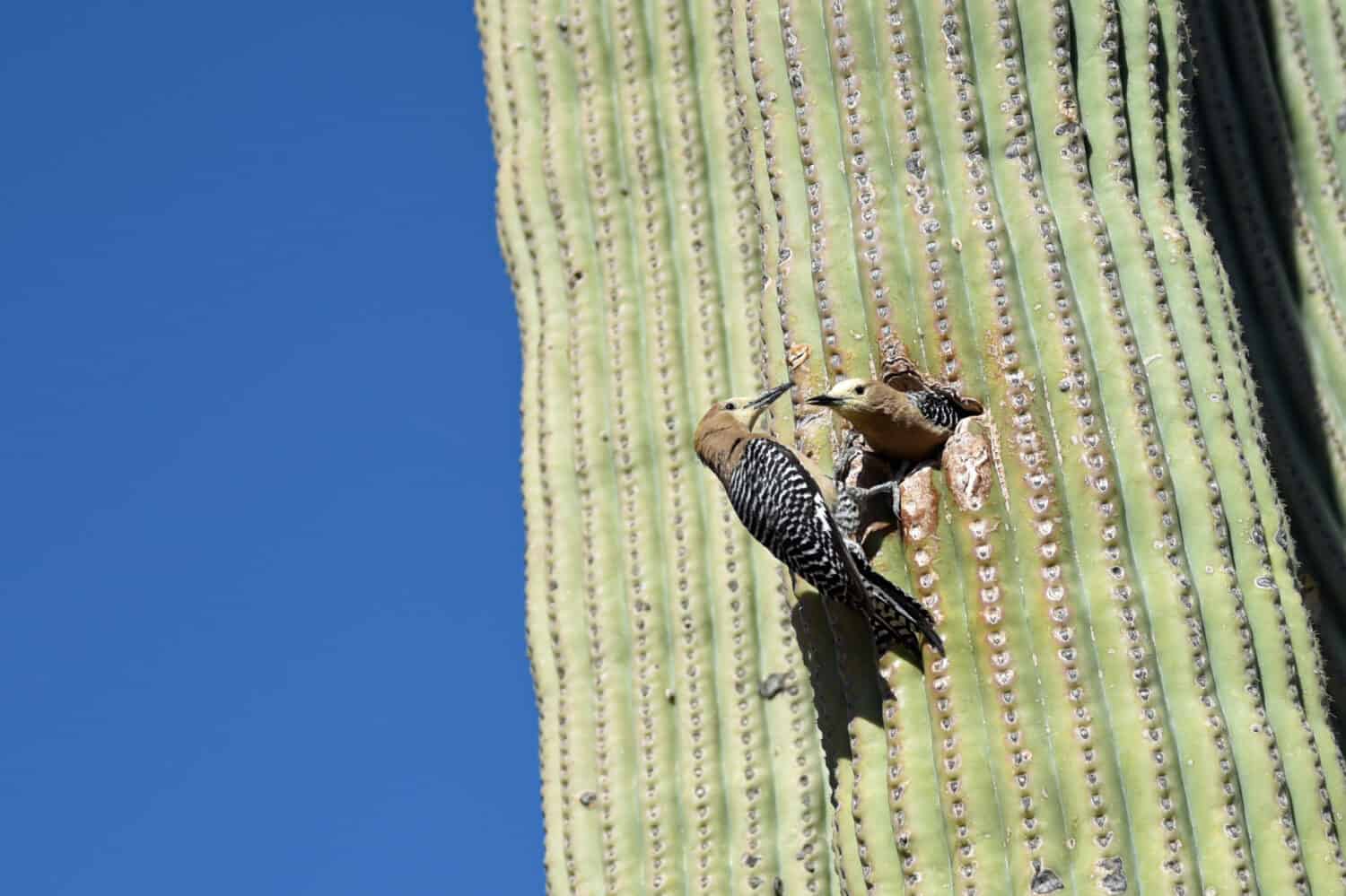
Gila Woodpeckers often make their nest cavities in the giant Saguaro cactus.
©dba duplessis/Shutterstock.com
In the southwest United States and Mexico, some species of woodpeckers raise their babies in nests excavated in cactus plants. The Gila Woodpecker excavates cavities in the giant Saguaro Cactus. The Gilded Flicker also utilizes the Saguaro, as well as the Mexican Cardon Cactus. Meanwhile, the Grey-breasted Woodpecker of southern Mexico uses tall and columnar local cacti for nesting. All of these birds also use suitable trees, such as mesquite or cottonwoods. After the baby woodpeckers leave the nest, other animals often use the cavities created by the woodpeckers to make homes of their own.
A Baby Woodpecker Usually Takes a While to Develop Its Colors
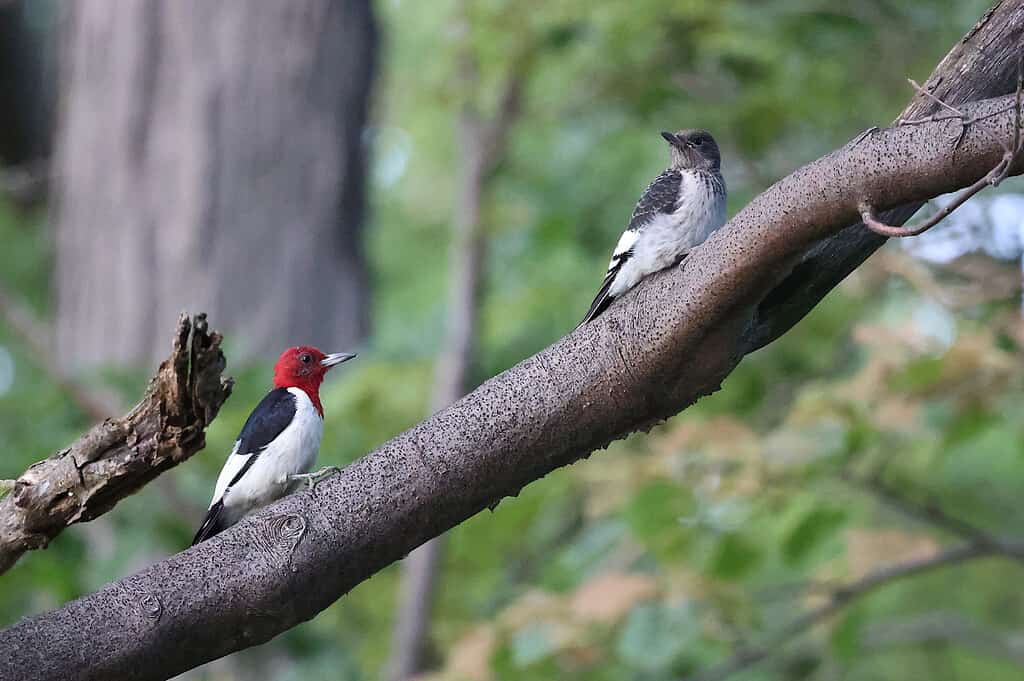
A juvenile Red-headed Woodpecker takes a while to develop the signature plumage of its parents.
©artiste9999/iStock via Getty Images
Some baby woodpeckers look a lot like their parents before they leave the nest. Others take a long time to develop the signature colors that adults of their species wear. The Red-headed Woodpecker, for example, often retains its drab juvenile colors until its first winter. Some don’t develop their namesake red head until they reach one year or more in age. Maintaining the juvenile colors may be a protective feature, as it allows a baby woodpecker to better camouflage in its natural habitat.
Both Male and Female Woodpeckers Tend the Nest
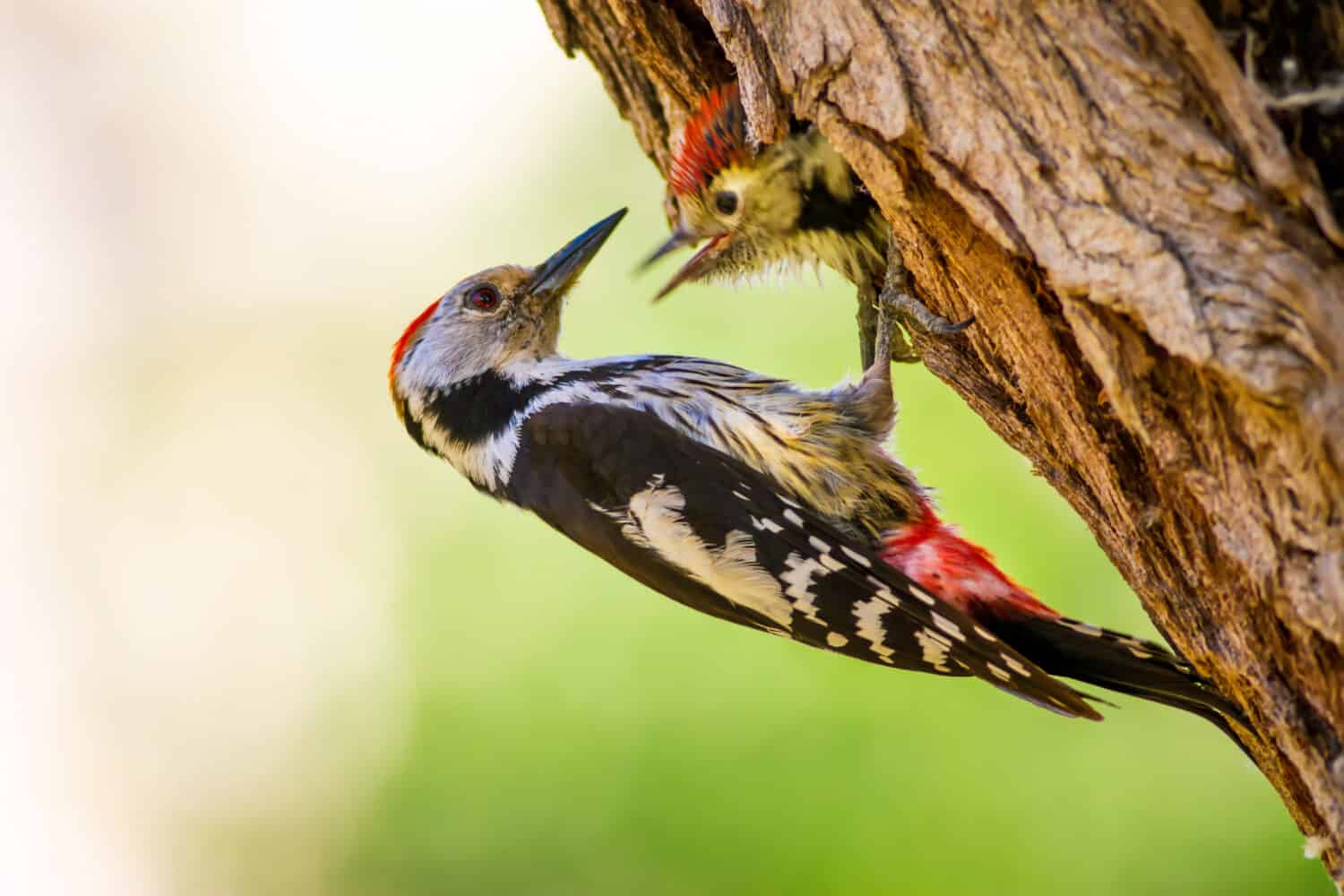
Both male and female woodpeckers tend to incubate their eggs and care for their chicks.
©smutan/Shutterstock.com
In many of the familiar woodpecker species, both the male and female parents incubate the eggs and tend to the chicks once they hatch. They may take different shifts during incubation. Once the chicks hatch, the males may tend to forage further away from the nest while the females stay close by and feed the chicks more often. The incubation period and the time it takes for a baby woodpecker to leave the nest varies from species to species. On average, the woodpeckers incubate their eggs between 2 and 3 weeks. The baby woodpeckers tend to leave the nest sometime between about 3 to 4 weeks.
A Baby Woodpecker Eats the Same Foods Its Parents Eat

Red-bellied woodpeckers make their nest in a hole they make in a dead or decaying tree.
©iStock.com/Harry Collins
Woodpeckers feed their young the same foods that they eat. Their diet consists largely of insects, larvae, and other invertebrates. They also eat berries and other fruits, as well as a variety of seeds. Both the male and female parents forage for food and return to the nest with meals for their chicks. As a baby woodpecker grows, it becomes more and more aggressive about reaching outside the nest for food when its parents approach.
Woodpeckers Have Specialized Feet and Tails
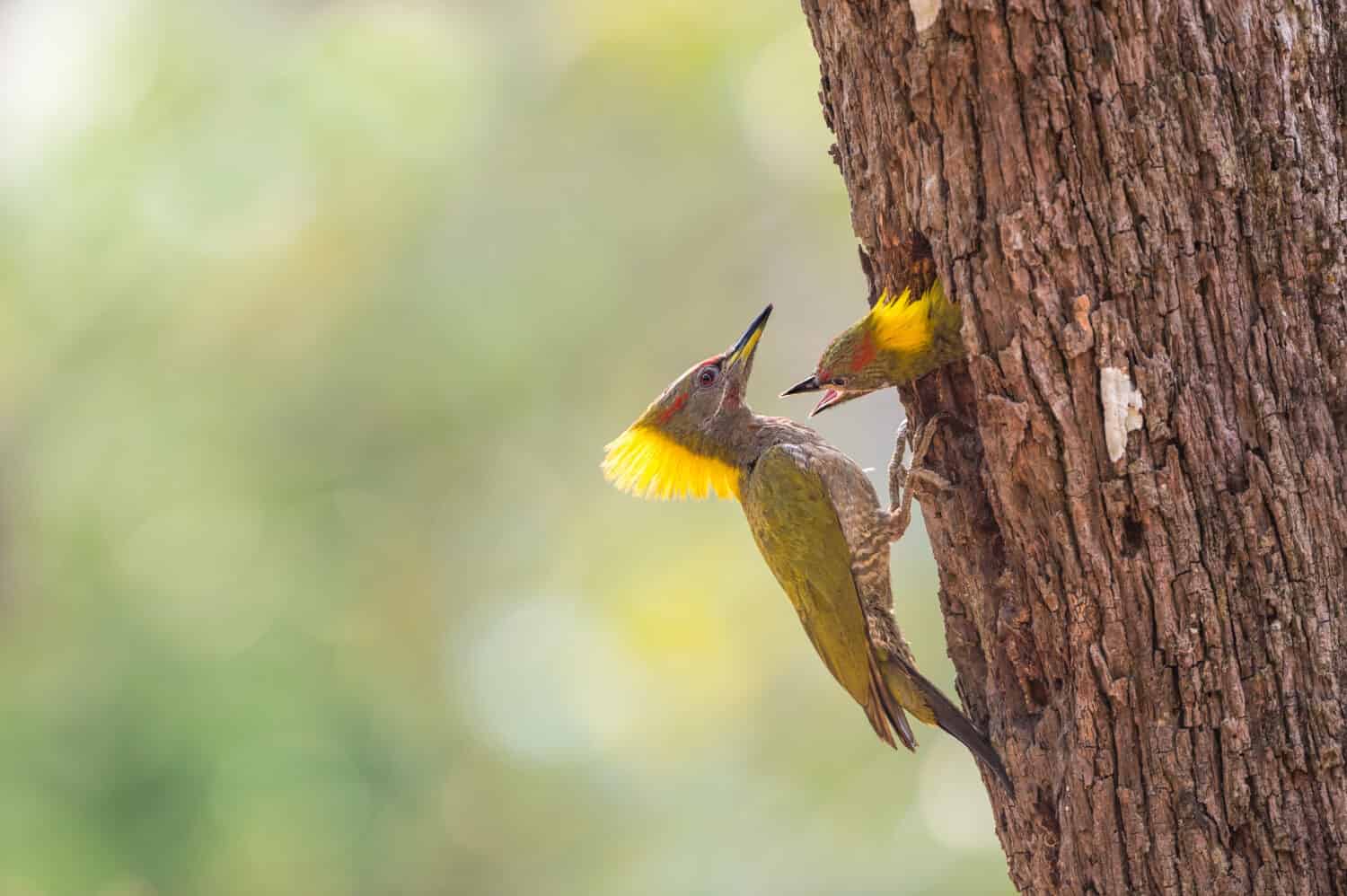
The toes on the feet of woodpeckers resemble those of parrots.
©noicherrybeans/Shutterstock.com
Woodpeckers have zygodactyl feet, like those of a parrot. These specialized feet have two inner toes that face forward and two outer toes that face backward. Most songbirds have three toes that face forward and one that faces backward. Zygodactyl feet help birds like woodpeckers to climb vertically on the trunks of trees, and to hold on tightly while feeding their babies. They also have very stiff tail feathers that help support them while they hang on vertical surfaces.
Woodpecker Fledglings Stick Around a Little While Longer
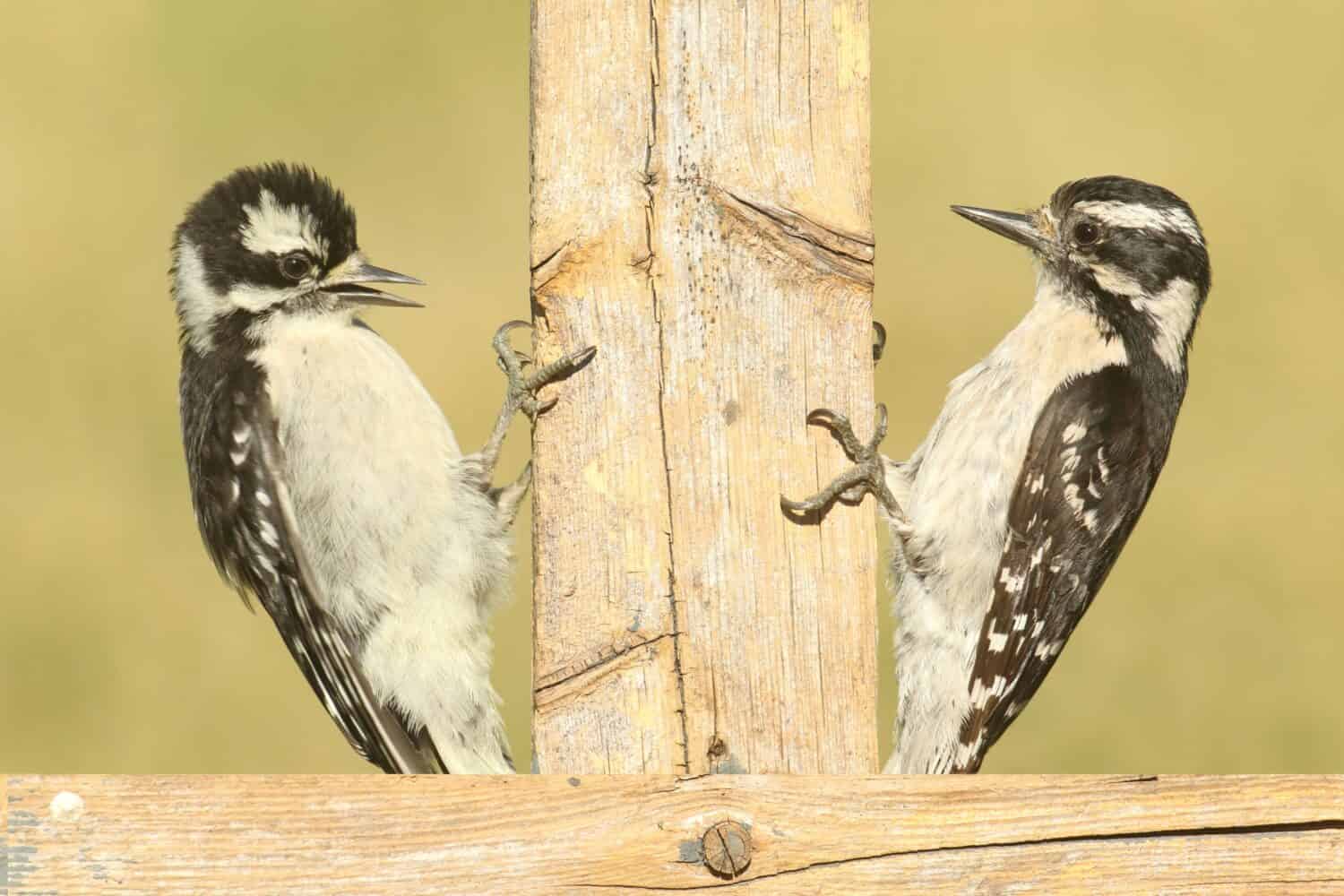
Woodpecker fledglings don’t typically rush to get away from their parents.
©Steve Byland/Shutterstock.com
Although most woodpeckers leave the nest within about 3 to 4 weeks after hatching, they tend to stick around their parents a little while longer. For the first few weeks after they fledge, their parents continue to watch over them. This extended period of care probably gives the young birds a greater chance of survival as they learn to care for themselves on their own.
Thank you for reading! Have some feedback for us? Contact the AZ Animals editorial team.

